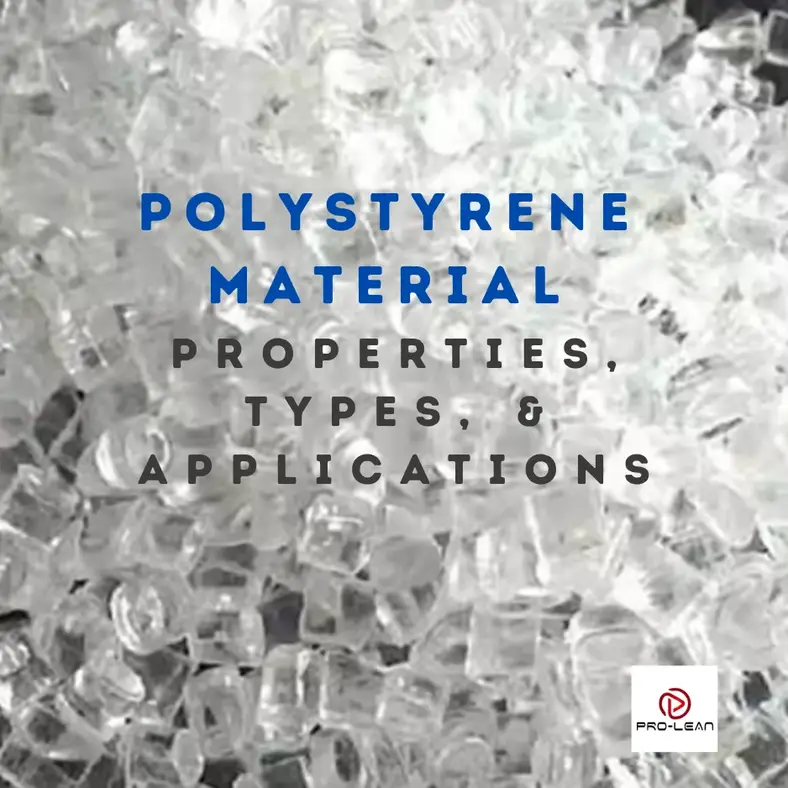
Polystyrene material
Polystyrene material is a thermoplastic polymer, a category of polymers that can be heated and processed through injection molding, extrusion, and other methods. The material is available as either solid plastic or foam.
The solid plastic version is normally transparent, affordable, and lightweight. The blend of friendly polystyrene properties is popular for many uses, from toys to electronic casings.
In its expanded or foam state, polystyrene material is lightweight and customizable, and has incredible insulating and properties. It is used extensively in constructions for insulations and moisture resistance, among other areas.
This FDA compliant and inexpensive material is one of the most exciting and attractive for users across many industries. In this article, we outline polystyrene types, polystyrene uses, and manufacturing processes.
What Is Polystyrene?
Polystyrene is a sturdy synthetic polymer produced from styrene polymerization and used in many industries for prototyping, packaging, and so on. It is easy to cut and has good dimensional stability, thus it is a suitable material for CNC machining process.

Styrene monomer
Polymerization entails the chemical combination of monomers (smaller molecules) to create polymers (larger molecules).
If you want to identify it from other plastics, look for code number six, which is normally placed at the bottom of the item. Its pellets are colorless and transparent, but they emit a thick smoke when burned. 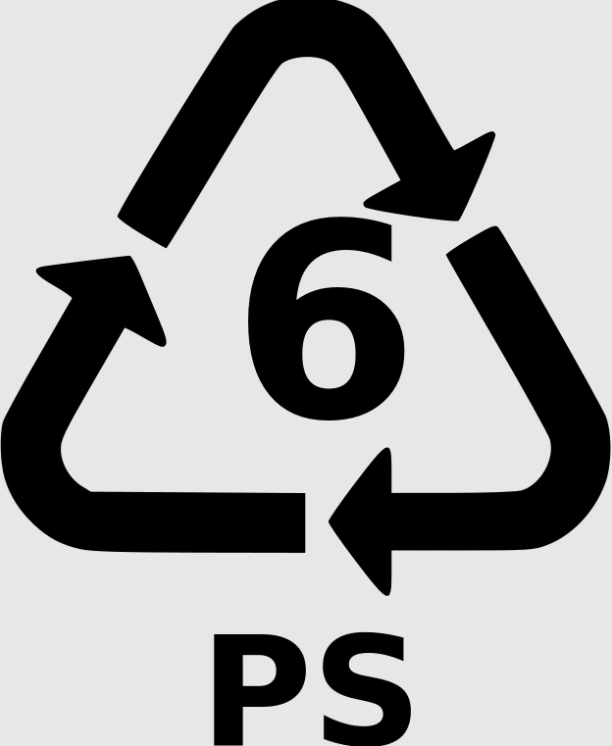
Code six for polystyrene
This polymer is lightweight and versatile, built for adaptability to many applications. For instance, its lightweight nature contributes to fuel efficiency in the automotive industry.
As a polymer, this material softens on heating and hardens after cooling. Since polystyrene also exists as foam or solid, it is widely used.
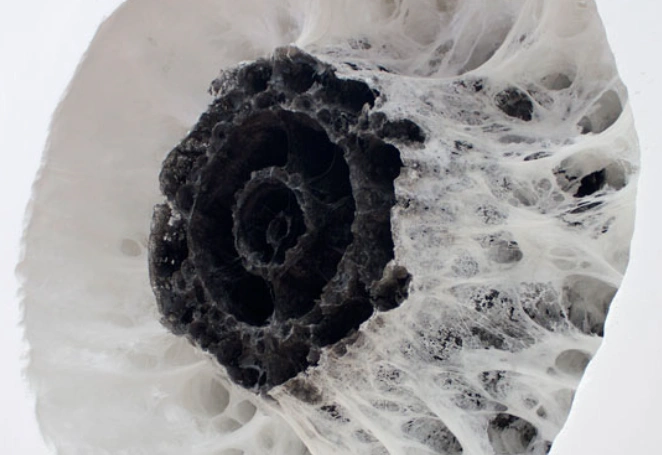
Melted and solidifed polystyrene (styrofoam)
Its main variations are expanded polystyrene (EPS), extruded polystyrene (XPS), general-purpose polystyrene (GPPS), and high-impact polystyrene (HIPS).
All these are popular in industrial applications and could appear under different names or brand names. A good example is Extruded Polystyrene (XPS), which is prominent in construction. A popular brand under this variety is Styrofoam, which is sometimes errorneously considered a general term for foam-based polystyrene.
Mechanical Properties Of Polystyrene
Polystyrene is low-density, brittle and hard, so it does not perform well where ductilty is preferred. Its tensile strength is relatively high at 60 MPa, which is unmatched by any other multipurpose thermoplastic.
However, it does not suit engineering plastic roles because its creep resistance, impact resistance, and wear resistance are low. Overall, most of the material’s mechanical properties are dictated by the prevailing temperature.
Thermal Properties Of Polystyrene
Talking of the prevailing temperature, the first thing to note about polystyrene is poor performance at low temperatures. It can only be reliably used at between 60–80°C because. Note also that the material’s heat deflection temperature is usually 70-100°C (158-212°F).
These limits point to one thing – polystyrene material is ideal for low-heat tolerance parts such as prototypes, which can also be easily CNC-machined.
The Chemical Resistance Of Polystyrene Material
Polymers are renowned for their chemical resistance, which is the capability to repel chemical attack, albeit momentarily. Due to the chemical composition of polystyrene, the material doesn’t swell, corrode, or dissolve when exposed to various chemicals.
These are mostly the mild acids, mineral oils, and salts. However, the thermoplastic may not withstand exposure to higher fatty acids and hydrocarbons. Its susceptibility to oxidation and light exposure is also noteworthy. However, it has relatively impressive radiation resistance.
Try Prolean Now!
What Are The Types of Polystyrene?
Polystyrene is available as expanded polystyrene (EPS), extruded polystyrene (XPS), general-purpose polystyrene (GPPS), and high-impact polystyrene (HIPS), among other types. Each of these PS plastic examples has distinct properties and applications.
Choose the right one for your CNC machining project to get the best results. That means identifying a balance of strength, chemical resistance, and weight in line with the intended use, as is always the case for all materials for CNC machining.
Expanded Polystyrene (EPS)
Expanded Polystyrene (EPS) is one of the lightest packaging materials available. It is made of approximately 98% air, making it very high impact resistant. EPS is versatile because it can be manufactured in densities ranging from 12kg/m3 to 50kg/m3.
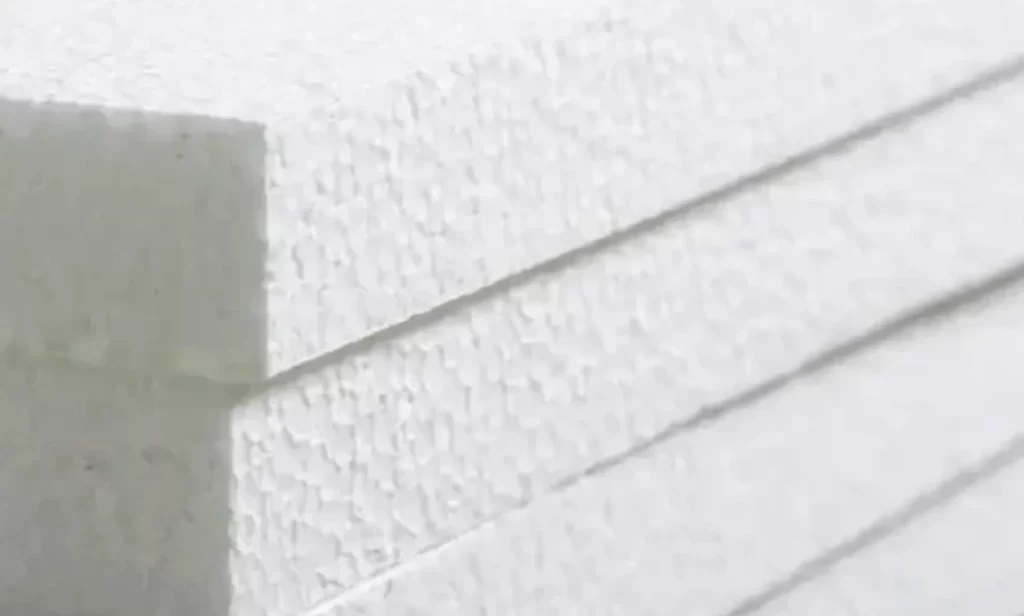
Expanded polystyrene
This chemically inert material has several applications including food packaging and construction for thermal insulation and strength.
Extruded Polystyrene (XPS)
Extruded polystyrene (XPS) is a renowned foam insulation material that is commonly used as insulation for windows, walls, floors, and roofs. Its thermal performance is perfectly complemented by water resistance, low weight, durability, and versatility.
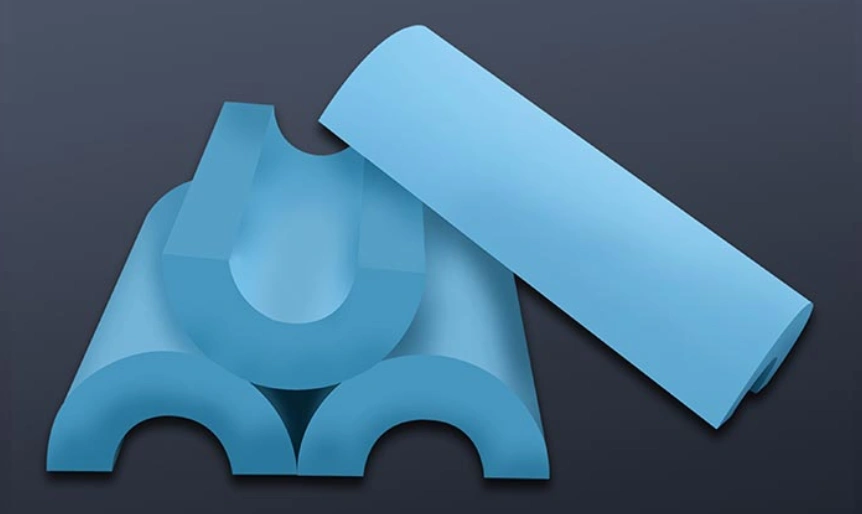
Extruded polystyrene (XPS)
The material is often associated with building energy efficiency owing to its excellent thermal performance. However, its environmental impact and relatively high cost are sometimes concerning.
General-purpose Polystyrene (GPPS)
This is another valuable product of styrene (vinyl benzene). It is one of the most widely used plastic polymers because of its suitable properties – odorless, tasteless, X-ray resistant, affordable, rigid. Popular applications of GPPS are toys, electronic cases, refrigerator trays, and many others.
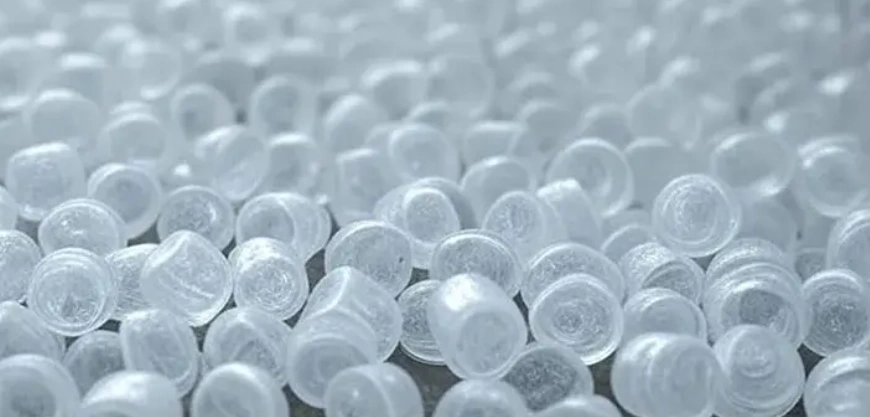
General purpose polystyrene (GPPS)
High-impact Polystyrene (HIPS)
While this polymer has degraded transparency, it provides excellent stiffness, impact strength, and moldability. Its balanced mechanical properties are ideal for food trays, toys, yogurt containers, and air conditioner covers, among others.
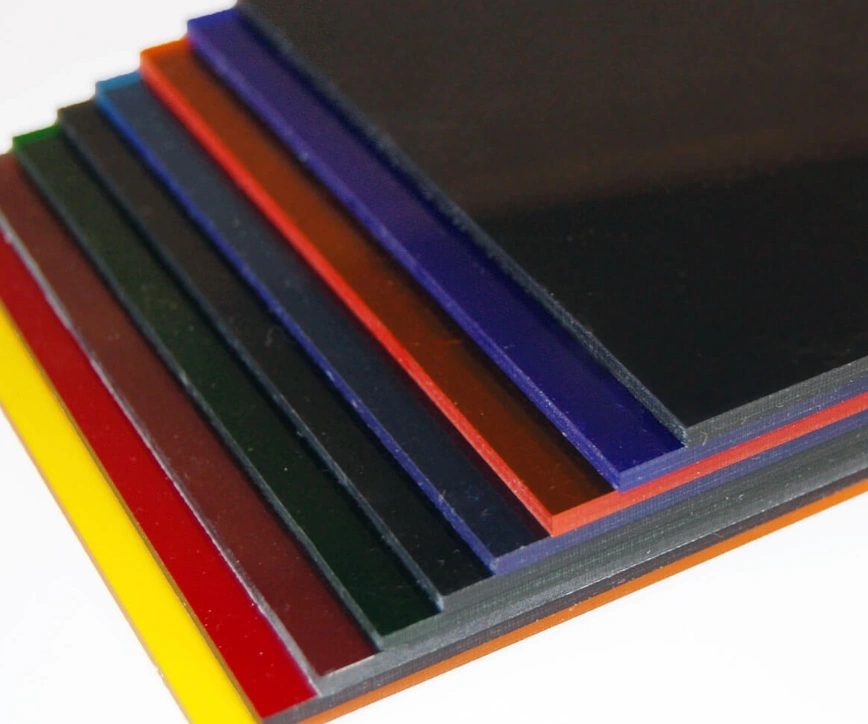
High impact polystyrene (HIPS)
Advantages Of Polystyrene Material
Polystyrene material has several advantages, including perfect formability, ease of CNC machining, and affordability. These advantages align with the materials suitability for prototyping and manufacture of lightweight products of polystyrene.
Here are notable advantages of polystyrene material:
- Cost-effective to produce
- Highly impact resistant as both foam and plastic
- Food-safe thermoplastic
- Heat responsive – perfect for thermoforming
- Low weight
You can also explore CNC machining & its advantages because this manufacturing process is instrumental to optimizing the advantages of polystyrene.
Disadvantages Of Polystyrene Material
Despite its superior affordability and flexibility, this polymer has its limitations, which you should consider for your CNC machining projects. Poor heat resistance and impact resistance rank highly in the list of disadvantages. For these alone, you wouldn’t want to use polystyrene parts for demanding structural applications.
This takes to the disadvantages of polystyrene, which are:
- Very poor recycling suitability
- The foam form is extremely bulky – not cost-effective to transport
- Processing can have adverse effects on the environment
Different Applications Of Polystyrene
Polystyrene uses are in different industries, from packaging to prototyping. Its ease of CNC machining, formability, and cost-effectiveness makes it a logical option for these and other applications, which are summarized in the table below.
| Industry/Area | Specific application of polystyrene |
| Packaging | Cushioning in shipments, electronics’ packaging |
| Consumer products | Toys, product cases, CD cases |
| Medical | Test tubes, medical trays, drugs packaging |
| Construction | Insulation boards, sheathing panels |
| Food service | Egg carton, meat trays, plates |
| Craft | Decorations, educational bases |
| Soundproofing | Ceiling tiles, insulation panels |
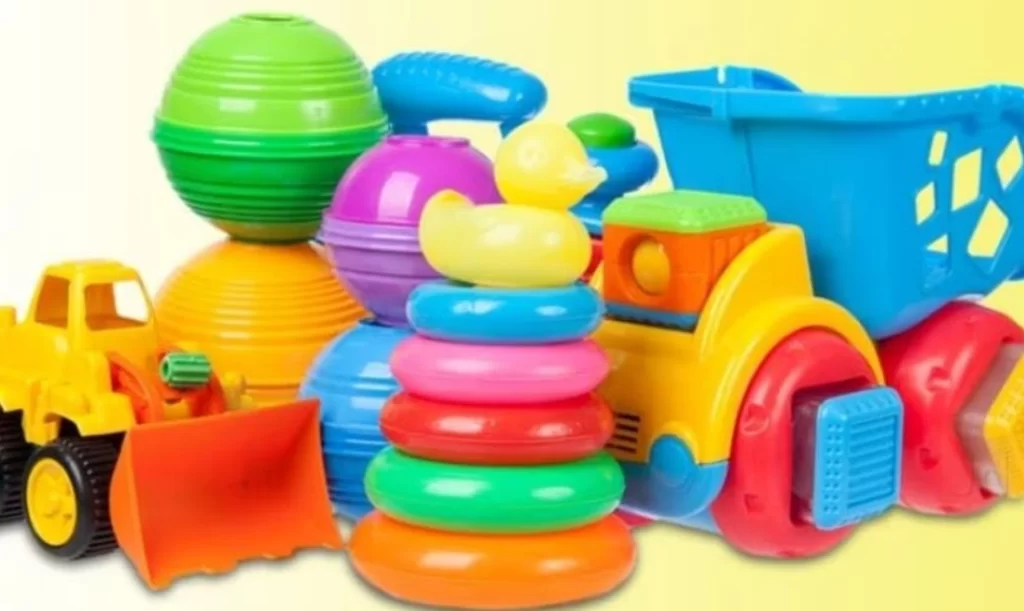
Polystyrene toys
ProleanTech, as one of the top 9 CNC machining manufacturers in the world, can effortlessly and cost-effectively produce such products from polystyrene to very tight tolerance.
Try Prolean Now!
How Is Polystyrene Manufactured?
As mentioned earlier, the initial manufacture of polystyrene is through polymerization of styrene, the monomer. This is followed by the processing steps to get the products of polystyrene we use daily.
The most popular manufacturing processes for the polymer are CNC machining, thermoforming, injection molding, and extrusion. To choose any of these processes, consider the production volume, the required tolerances, the surface finish, and the product type.
CNC Machining
Polystyrene has good dimensional stability which is suitable for CNC machining of thermoplastics. However, it is important to note that the peformance levels of CNC-machined polystyrene varies from one type to the other.
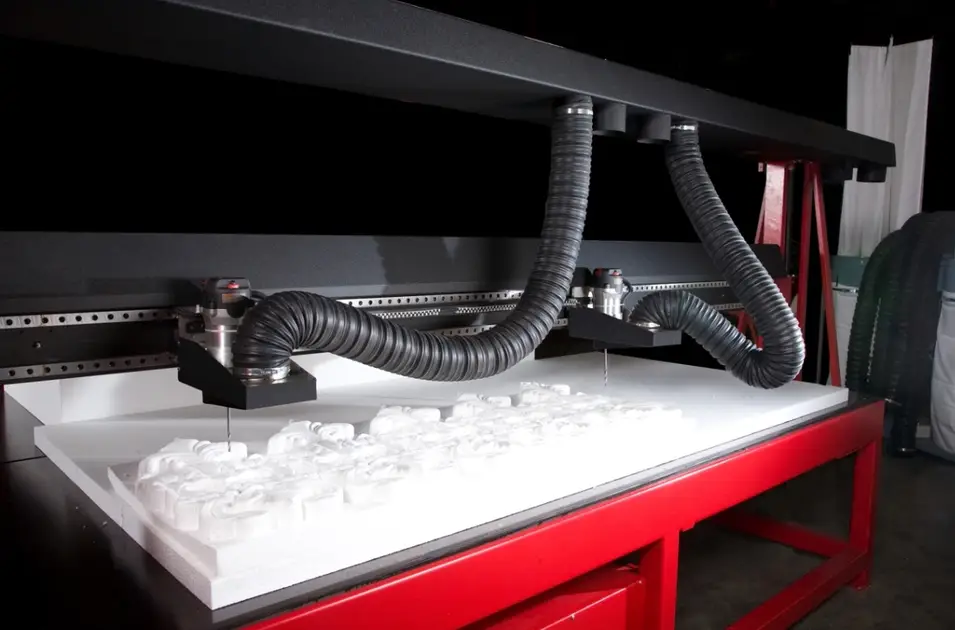
CNC machining polystyrene material
CNC machining services at ProleanTech produce high-quality polystyrene products large-scale and small-scale production, backed by advanced software, highly experienced personnel, and industry-leading CNC machines.
Here are the benefits of CNC machining for polystyrene material:
- Versatility offered by multi-axis CNC machining
- Unparalleled accuracy and repeatability
- Fast turnaround
- Parts can be custom-finished for preferred coating and painting
Read more: CNC Machining of Composites, CNC machining of Titanium & Alloys
Thermoforming
Thermoforming entails heating the polystyrene material to a pliable state and then forcing it into a mold to produce the required shape and dimensions. It is a popular technique for manufacturing trays, cups, and related containers. Easy to execute, the method is suitable for large volume manufacturing.
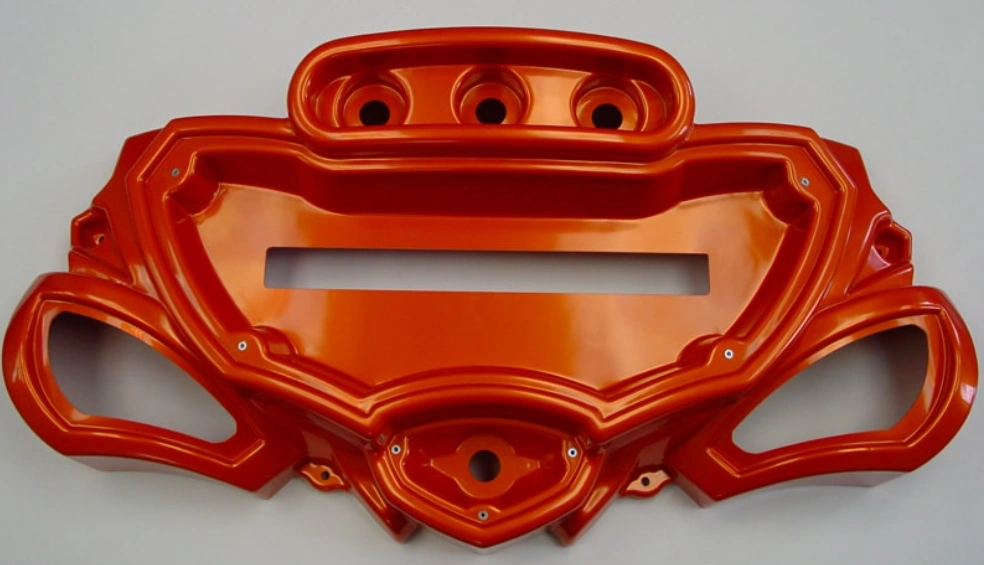
Thermoformed polystyrene product
Injection Molding
Polystyrene injection involves pressurizing molten polystyrene into a mold and leaving the material to solidify to produce a part with the shape of the mold. It requires careful control of the injection pressure, mold temperature, and melt temperature.
Injection molding is ideal for the manufacture of toys, packaging containers, car dashboards, and test tubes.
Extrusion
This polystyrene manufacturing process entails feeding polystyrene granules into the extruder and heating them to molten state. Different types of additives such as blowing agent and coloring agent are added to the mixture. The molten mixture is then controllably forced through a die and left to get the shape of the die.
In Conclusion
Polystyrene is a dynamic, sturdy, and excellent thermal insulating material used in many industries. Its aesthetics are also great.
If you are looking for CNC machining services that will bring the best out of the polymer and add value to your business, your search ends here. Trust the professionals at ProleanTech to deliver excellent results, fast, and cost-effectively.
Contact us today, and we will furnish you with the details and provide a free quote in no time!
FAQs
Is polystyrene a plastic or Styrofoam?
Polystyrene is a plastic, but it is important to note that Styrofoam is a brand name under the extruded polystyrene foam (XPS) category. Because of its prominent use everyday, it is understandable that Styrofoam is often mistaken for general polystyrene.
What materials is polystyrene made of?
The original source of polystyrene is petroleum, which undergoes a process to produce styrene. Styrene is polymerized to produce polystyrene.
Why was polystyrene banned?
Polystyrene, specifically the expanded polystyrene (EPS) type, is banned in some regions because it is very difficult to recycle. Its persistence in the environment poses serious threats, mostly to wildlife.
Is polystyrene a good material?
Yes, polystyrene is a good material when used where suitable for its lightweight, machining ease, and low cost. However, it is limited in heat resistance, environmental sustainability, and impact strength.
What’s the difference between styrofoam and polystyrene?
The difference is that polystyrene is a lightweight, sturdy, and transparent polymer used in many areas, while styrofoam is a popular brand name for a foam type of extruded polystyrene (XPS).

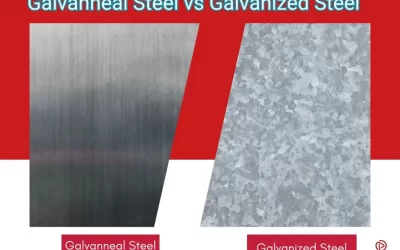
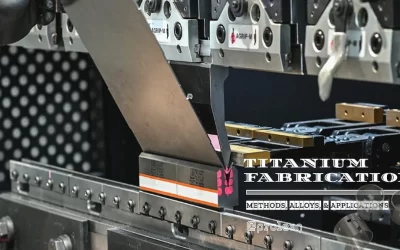
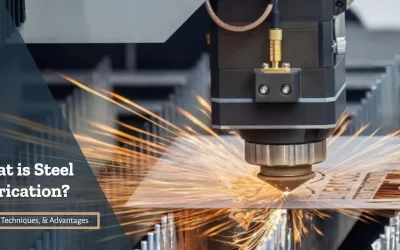
0 Comments